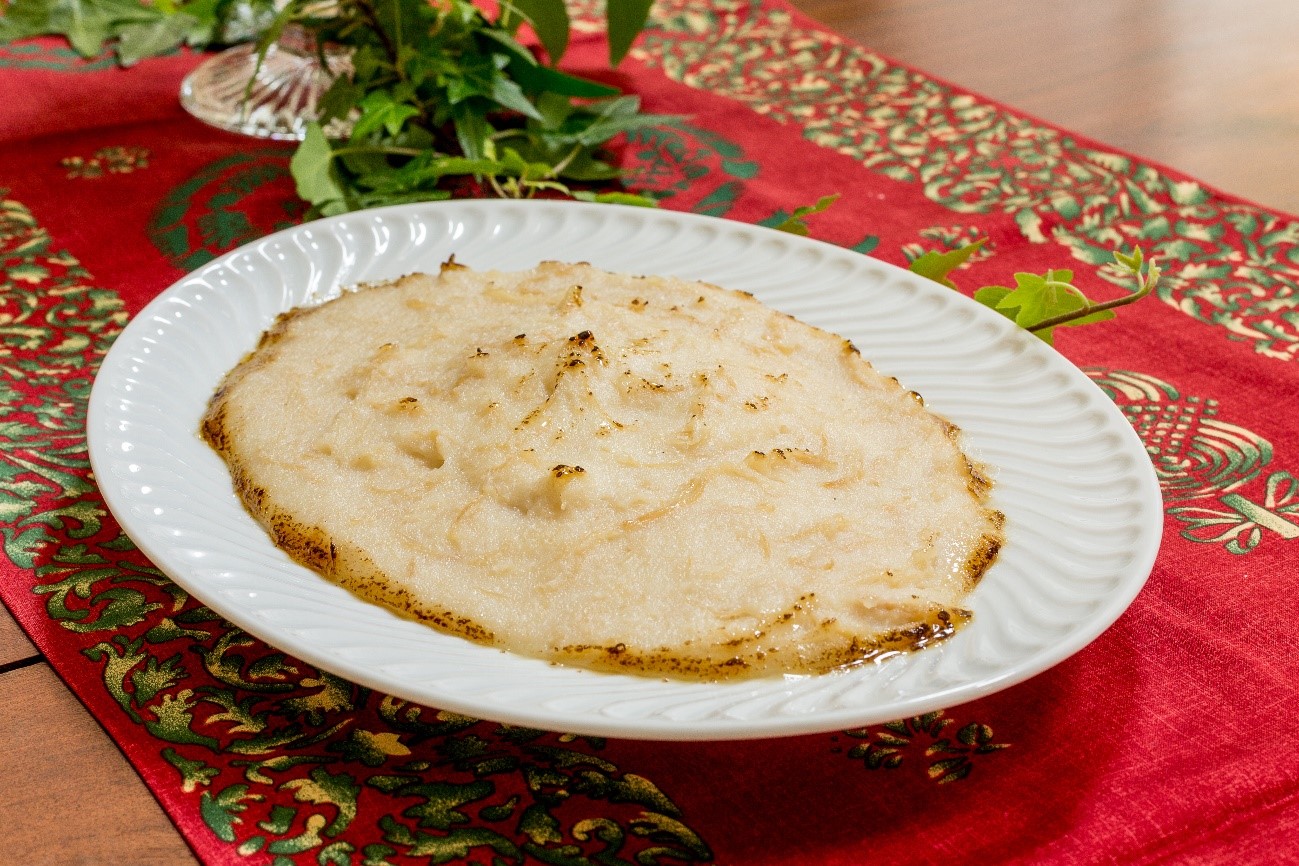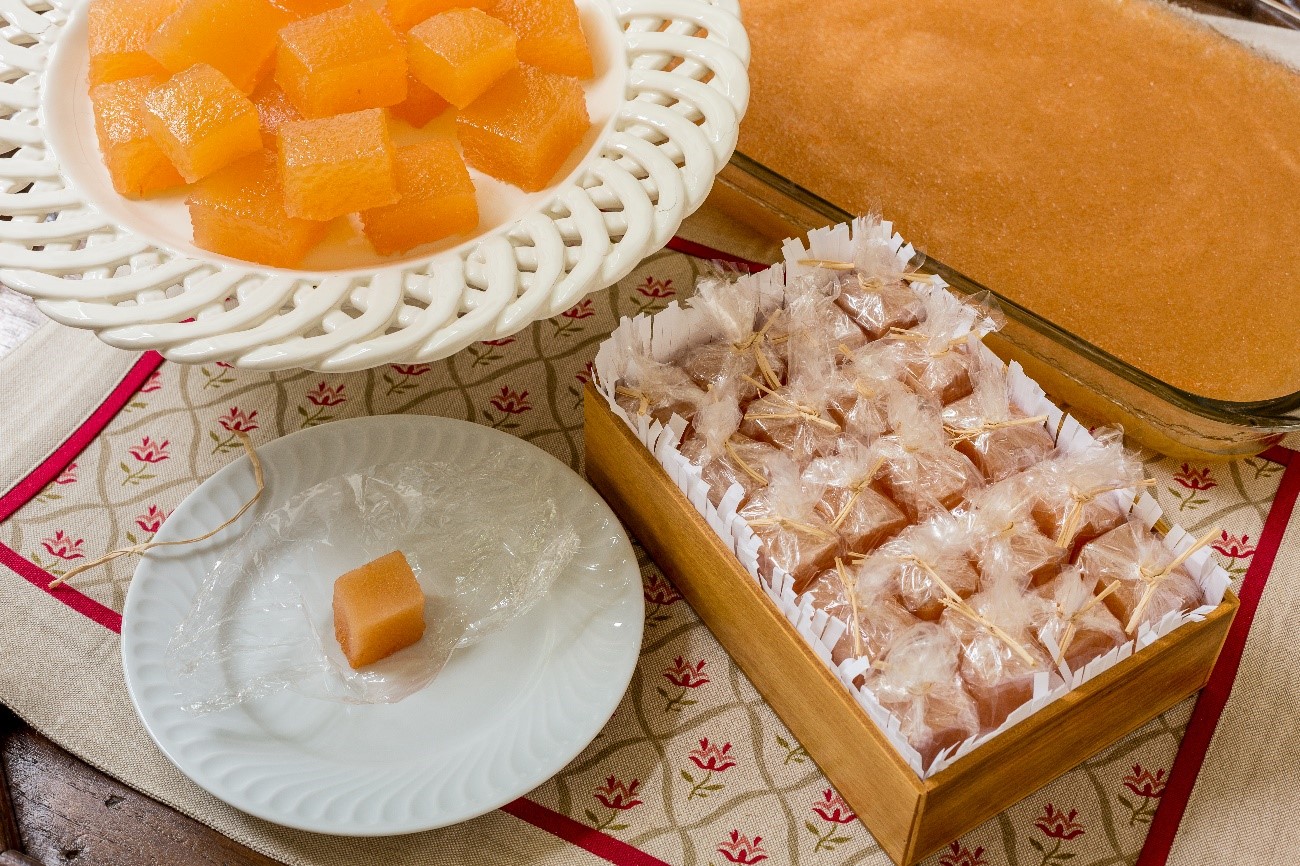
Christmas time: sweets for the body and soul
Christmas is coming. A time of celebration that only ends with the epiphany. In the Catholic world, since ancient times, this day comes after the Advent feast, which started a month earlier and goes until December 24th. It is a short time, of rest and fraternal conviviality, that imposes a break in the strict daily diet. During this and other festivities, there is a full table with rich and abundant meals. The best meat is chosen, the best wine is drunk and sweets are eaten. Meals become real moments of pleasure. However, looking back at the consumption of sweets in Portugal, since the Early Modern Age, we need to ask: Are sweets only being cooked during these special times?
Looking at the daily spending and infirmary monastic books, we understand that this is false. Since the 16th century, sugar and almonds are required products in the monastic infirmary. For example, in the Constituições Monásticas da Ordem de São Bento de Portugal e do Brasil, first published in 1590 and secondly in 1629, it is required that some products exist in a monastic infirmary like sugar, almonds, raisins, plums, quince jam, pink sugar “and other sweets that the nurse would ask the dispensary”. At the same time, we observe the purchase and confection of sweets especially for patients.
This practice is explained by some medical European conceptions, since classical times, according to the teachings of Hippocrates and Galen. They defended that health is a consequence of perfect balance and combination of the four humours: blood (hot and moist), black bile produced in the spleen and stomach (cold and dry), yellow bile secreted by the liver (hot and dry) and phlegm, or, in other words, all mucous secretions (cold and moist).
Ovos reais. Sweet made with egg yolks, sugar syrup and sponge cake.
Photo by Mário Brandão
A balanced diet was essential to maintain and recover this humours harmony. So, all types of foods were classified between hot and dry or cold and moist. The most recommended were the moderately hot and moist ones, which were considered balanced. Seasoning the food is a corrective action to suppress the cold or overly hot and dry components. In this direction, sugar, egg yolks, white sifted wheat flour, milk, rice and some dry fruits like almonds, were considered some of the most health-promoting foods. In this way, the Portuguese sweet making tradition was developed inside and outside the monasteries. Egg, fruit, sugar, bread and milk sweets were the most consumed, offered as gifts or cooked for people in need to recover their health.
These ingredients have been analysed by doctors of that time such as Francisco da Fonseca Henriques. Sugar was hot and dry and essential in balancing humours. Considered very nutritious, it was included in the composition of all syrups, namely for respiratory diseases, such as coughs, catarrh and asthma, but also intestines (diarrhea and dysentery), stomach, kidneys, bladder and even for the relief of depressive symptoms. It could also be consumed as pink sugar and caramel, and obviously as an ingredient.
About the eggs, we highlight the use of the egg yolk, moderately hot and moist. The egg white was cold and moist, therefore not recommended to be eaten by patients. So, the preference was going to the egg yolk, which was considered anodyne, laxative, digestive and able to convert into good blood. It was prescribed for respiratory problems and convalescent, weakly and tuberculous patients.
Manjar branco. Sweet made with milk, rice flour, sugar and chicken breast.
Photo by Mário Brandão
The almond was hot and moist. Recommended for heart, digestive and lung problems such as asthma, cough and hoarseness. It was also used as a sleeping aid and useful in spasms, convulsions and ear pains. Other dry fruits such as plums and raisins were important to cleanse the body, by purges, and the rebalance of humours.
With eggs, sugar and almonds, lots of sweets could be cooked: maçapães (almonds, sugar and egg white) ovos-moles (egg yolk and sugar), fios de ovos (egg yolk and sugar), pão-de-ló (eggs, sugar and flour), etc., which were served in many different ways or constitute a filling for other sweets.
The rice was hot and dry. According to Francisco da Fonseca Henriques, it is “the best and the richest of all vegetables”. It served to treat coughs, tuberculosis, diarrhea, dysentery and general weakness. It was eaten in arroz-doce, manjar real or manjar branco, sweets cooked with milk, rice flour, chicken breast and eggs, wich were registered in the Portuguese sweet making tradition since the 16th century.
Milk, and other dairy products such as butter, cream and cheese, were hot and moist, considered “one of the best foods that mankind uses”. In medical terms, they were digestive and controlled blood acidity. It was also said that they provided “good colourings”. We find them in the treatment of tuberculosis, dry and convulsive coughs, bile cramps, jaundice, diseases of the digestive system and throat. With milk they also cooked leite-créme (milk, eggs and flour) and later pudins, based on the English pudding repice. And don’t forget the queijadas, pasteis de nata and many other sweets.
Quince jam.
Photo by Mário Brandão
Finally, the fruit jams. The fruit was cold and moist, not advised for patients. However, during summer, on the hottest days, some fruits were recommended to refresh the body. Therefore, the addition of sugar was important to correct the cold and moist elements and, using a sugar syrup assured its conservation for a long time. Of all the fruits, such as peach, pear, plum, cherry, and vegetables, such as pumpkin, we highlight the citron, which has great medicinal importance from seeds to peel, and the quince, consumed in numerous recipes, recommended for many digestive problems and lack of appetite.
Some of these ingredients were used to bake sweetbreads, where the wheat flour was the main ingredient, not forgetting the eggs, butter, sugar and some spices, such as cinnamon and fennel. This is one of the least expensive sweets, nevertheless, it includes essential ingredients in the prevention of diseases.
Christmas is getting closer, so let’s look at the feast table. There we will find many of these sweets. After the long Advent fast, it is important to balance the body with proper food (hot and moist) that will nourish the soul for the new challenges of life’s journey.




0 Comments